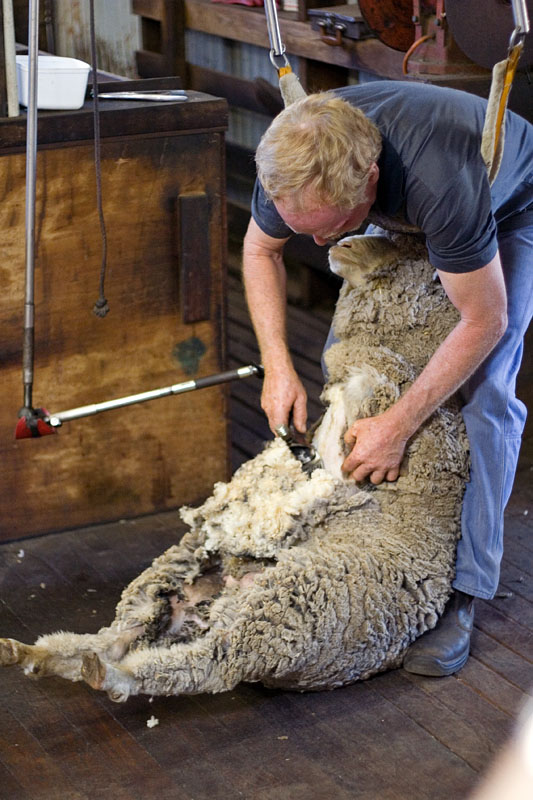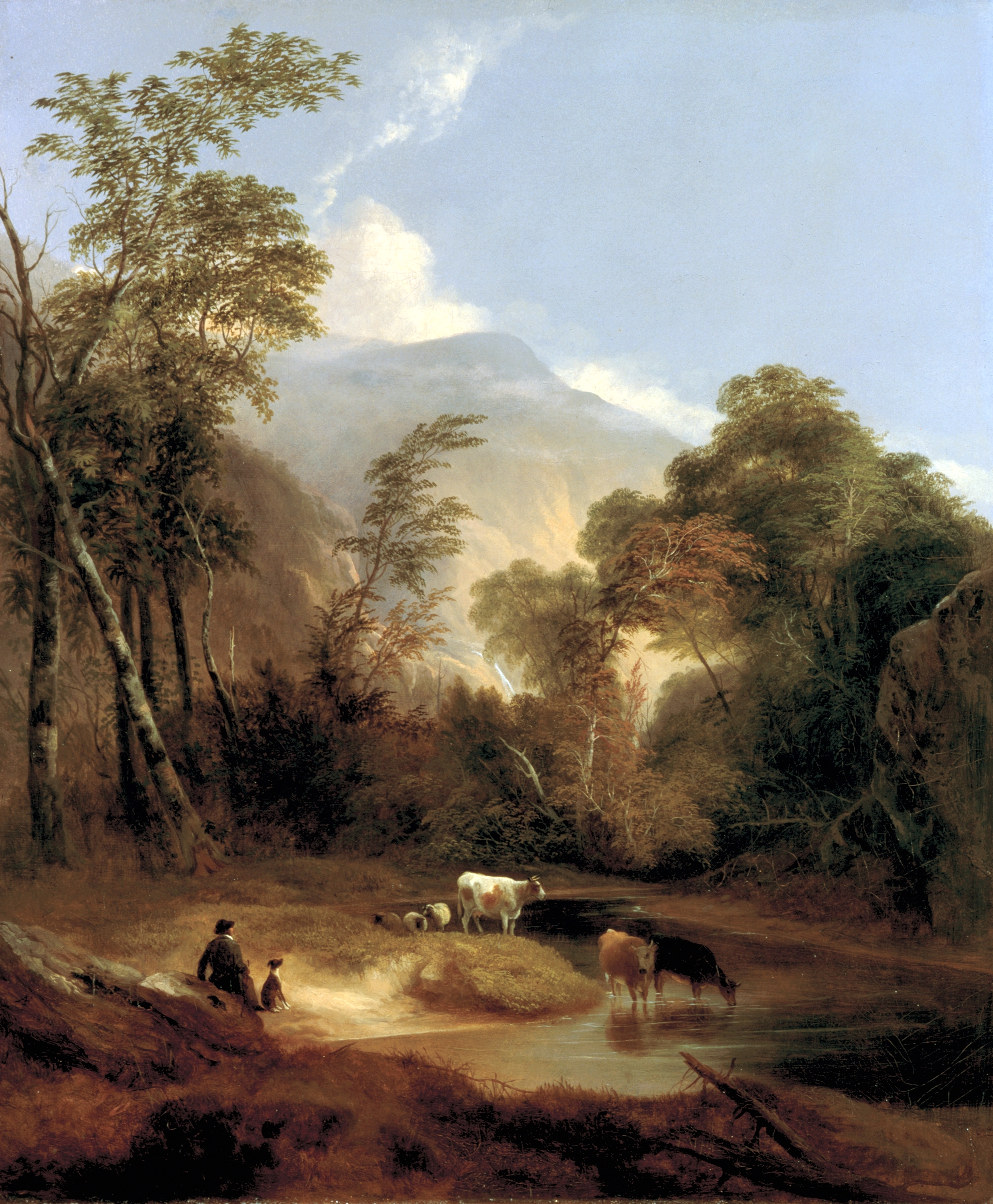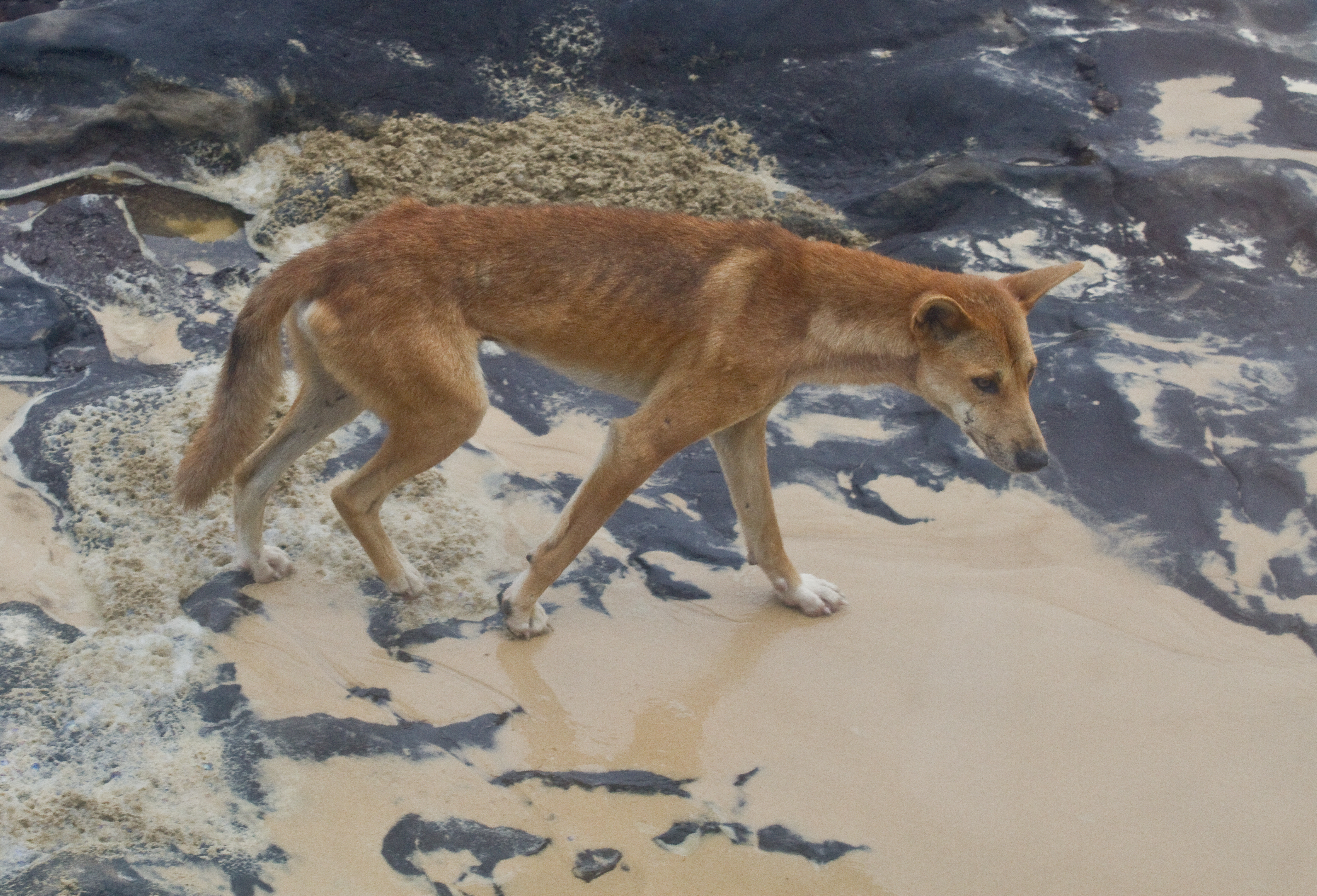|
Maroonah
Maroonah Station, often referred to as Maroonah, is a pastoral lease that operates as a sheep station. It is located about east of Coral Bay and south of Onslow in the Pilbara region of Western Australia. Maroonah occupies an area of and shares boundaries with Towera, Lyndon, Mangaroon, Ullawarra, Edmund and Glenflorrie Stations as well as the Barlee Range Wildlife Sanctuary. The traditional owners of the area are the Tharrkari, who currently lease and manage neighbouring Ullawarra station. Maroonah was established in 1893 by J. H. Mansfield and began trading in wool the same year. Mansfield had previously managed Karratha and Middalya Stations before acquiring Maroonah. Following the death of Mansfield in 1907 the property was being run his wife, Annie Mansfield, and the manager of the property John Griffin. The station was flooded in 1909 following severe weather that washed away miles of fencing. Later the same year shearing produced a clip of over 150 bales of woo ... [...More Info...] [...Related Items...] OR: [Wikipedia] [Google] [Baidu] |
Middalya Station
Middalya Station is a pastoral lease that operates as a sheep station in Western Australia. It was located south east of Coral Bay and north east of Denham in the Gascoyne region. The Minilya River runs through the property. The traditional owners of the area are the Tharrkari people, who currently lease and manage Ullawarra station. The rangeland occupies an area of , approximately of which is described as being in good or fair condition. It is able to be stocked with 19,350 sheep, with a flock of 15,200 being recommended. It is composed of sandplains, alluvial and stony plains and hills. In 1887 the property was stocked with 6,000 sheep, which produced 87 bales of wool; by 1890 the flock had increased to 16,000 producing 220 bales. J. H. Mansfield, who had previously managed Karratha Station and later owned Maroonah Station, was managing Middalya in the 1880s. Douglas John Hearman acquired Middalya at some time prior to 1897. Middalya was placed on the market in 19 ... [...More Info...] [...Related Items...] OR: [Wikipedia] [Google] [Baidu] |
List Of Ranches And Stations
This is a list of ranches and sheep and cattle stations, organized by continent. Most of these are notable either for the large geographic area which they cover, or for their historical or cultural importance. West Africa *Obudu Cattle Ranch * SODEPA cattle ranches in Cameroon Australia ''Station'' is the term used in Australia for large sheep or cattle properties. New South Wales * Borrona Downs Station *Brindabella Station * Caryapundy Station * Cooplacurripa Station * Corona Station *Elsinora *Momba Station * Mount Gipps Station * Mount Poole Station *Mundi Mundi *Nocoleche * Oxley Station *Poolamacca Station *Salisbury Downs Station * Sturts Meadows Station *Thurloo Downs * Toorale Station *Uardry *Urisino *Yancannia Station Northern Territory * Alexandria Station *Ambalindum *Alroy Downs *Amburla *Amungee Mungee *Andado *Angas Downs Indigenous Protected Area *Anthony Lagoon * Argadargada Station *Austral Downs *Auvergne Station * Ban Ban Springs Station *Banka Banka Station ... [...More Info...] [...Related Items...] OR: [Wikipedia] [Google] [Baidu] |
Ullawarra
Ullawarra Station, often referred to as Ullawarra, is a pastoral lease that has operated as a sheep station but now operates as a cattle station. It is located about west of Paraburdoo and south east of Onslow in the Pilbara region of Western Australia. Ullawarra occupies an area of and shares boundaries with Glenflorrie, Maroonah, Kooline, Wanna, Edmund and Amelia Stations as well as the Barlee Range wildlife sanctuary. The country is made up of rugged hills, mountains and ridges, narrow valleys, drainage floors and stony plains. Some narrow floodplains of the Henry River are situated within the station boundaries. In 1979 the property was running about 900 cattle and was able to carry about 1,200 head. Ullawarra was established by Sam Edwards at some time prior to 1897. When Edwards placed the property on the market in 1903 it encompassed an area of and was stocked with 3,000 sheep and 60 head of cattle. The property was bought in 1903 by fellow pioneer A. E. Watts ... [...More Info...] [...Related Items...] OR: [Wikipedia] [Google] [Baidu] |
Glenflorrie
Glenflorrie Station, also known as Glen Florrie Station, is a pastoral lease that operates as a cattle station. It is located about south of Pannawonica and west of Paraburdoo in the Pilbara region of Western Australia, and occupies an area of . It is currently owned by Murray and Aticia Grey. The Grey family have been producing Brahman cattle for the live export trade. The property is watered by Glenflorrie Creek. It lies between the Ashburton and Henry Rivers, and shares boundaries with Uaroo Station. The traditional owners of the area are the Tharrkari people, who currently lease and manage Ullawarra Station. Glenflorrie was established at some time prior to 1894. In 1896 the property was running both sheep and cattle. The property was acquired by G. W. Hall at some time prior to 1900. Hall placed the property up for auction in 1919. At this time Glenflorrie occupied an area of and was stocked with 7,000 sheep, 300 cattle and 50 horses. The Higham brothers sold Glen ... [...More Info...] [...Related Items...] OR: [Wikipedia] [Google] [Baidu] |
Sheep Shearing
Sheep shearing is the process by which the woollen fleece of a sheep is cut off. The person who removes the sheep's wool is called a '' shearer''. Typically each adult sheep is shorn once each year (a sheep may be said to have been "shorn" or "sheared", depending upon dialect). The annual shearing most often occurs in a shearing shed, a facility especially designed to process often hundreds and sometimes more than 3,000 sheep per day. Sheep are shorn in all seasons, depending on the climate, management requirements and the availability of a woolclasser and shearers. Ewes are normally shorn prior to lambing in the warmer months, but consideration is typically made as to the welfare of the lambs by not shearing during cold climate winters. However, in high country regions, pre lamb shearing encourages ewes to seek shelter among the hillsides so that newborn lambs aren't completely exposed to the elements. Shorn sheep tolerate frosts well, but young sheep especially will suffe ... [...More Info...] [...Related Items...] OR: [Wikipedia] [Google] [Baidu] |
Pastoral Leases In Western Australia
A pastoral lifestyle is that of shepherds herding livestock around open areas of land according to seasons and the changing availability of water and pasture. It lends its name to a genre of literature, art, and music (pastorale) that depicts such life in an idealized manner, typically for urban audiences. A ''pastoral'' is a work of this genre, also known as bucolic, from the Greek , from , meaning a cowherd. Literature Pastoral literature in general Pastoral is a mode of literature in which the author employs various techniques to place the complex life into a simple one. Paul Alpers distinguishes pastoral as a mode rather than a genre, and he bases this distinction on the recurring attitude of power; that is to say that pastoral literature holds a humble perspective toward nature. Thus, pastoral as a mode occurs in many types of literature (poetry, drama, etc.) as well as genres (most notably the pastoral elegy). Terry Gifford, a prominent literary theorist, define ... [...More Info...] [...Related Items...] OR: [Wikipedia] [Google] [Baidu] |
Droughtmaster
The Droughtmaster is an Australian breed of beef cattle. It was developed from about 1915 in North Queensland by crossing zebuine cattle with cattle of British origin, principally the Beef Shorthorn. It was the first Australian taurindicine hybrid breed; it is approximately 50% '' Bos indicus'' and 50% '' Bos taurus''. History The Droughtmaster was developed from about 1915 in North Queensland by crossing zebuine cattle with cattle of British origin, principally the Beef Shorthorn. Other British breeds, mainly Hereford, were later used. Much of the development was done by one breeder, R.L. Atkinson. In 1956 breeders decided to focus on red cattle only; the Droughtmaster name proposed by Atkinson was adopted. A breed society, the Droughtmaster Stud Breeders' Society, was formed, and a herd-book was started. From 1969, five Droughtmaster bulls were used for cross-breeding with the local Bhagnari in the Baluchistan province of Pakistan, leading to the creation of the Nari ... [...More Info...] [...Related Items...] OR: [Wikipedia] [Google] [Baidu] |
Australian Broadcasting Corporation
The Australian Broadcasting Corporation (ABC) is the national broadcaster of Australia. It is principally funded by direct grants from the Australian Government and is administered by a government-appointed board. The ABC is a publicly-owned body that is politically independent and fully accountable, with its charter enshrined in legislation, the ''Australian Broadcasting Corporation Act 1983''. ABC Commercial, a profit-making division of the corporation, also helps to generate funding for content provision. The ABC was established as the Australian Broadcasting Commission on 1 July 1932 by an act of federal parliament. It effectively replaced the Australian Broadcasting Company, a private company established in 1924 to provide programming for A-class radio stations. The ABC was given statutory powers that reinforced its independence from the government and enhanced its news-gathering role. Modelled after the British Broadcasting Corporation (BBC), which is funded by a tel ... [...More Info...] [...Related Items...] OR: [Wikipedia] [Google] [Baidu] |
Dingo
The dingo (''Canis familiaris'', ''Canis familiaris dingo'', ''Canis dingo'', or ''Canis lupus dingo'') is an ancient (Basal (phylogenetics), basal) lineage of dog found in Australia (continent), Australia. Its taxonomic classification is debated as indicated by the variety of scientific names presently applied in different publications. It is variously considered a form of domestic dog not warranting recognition as a subspecies, a subspecies of dog or wolf, or a full species in its own right. The dingo is a medium-sized Canis, canine that possesses a lean, hardy body adapted for speed, agility, and stamina. The dingo's three main coat colourations are light ginger or tan, black and tan, or creamy white. The skull is wedge-shaped and appears large in proportion to the body. The dingo is closely related to the New Guinea singing dog: their lineage split early from the lineage that led to today's domestic dogs, and can be traced back through the Maritime Southeast Asia to Asia. ... [...More Info...] [...Related Items...] OR: [Wikipedia] [Google] [Baidu] |
Drought
A drought is defined as drier than normal conditions.Douville, H., K. Raghavan, J. Renwick, R.P. Allan, P.A. Arias, M. Barlow, R. Cerezo-Mota, A. Cherchi, T.Y. Gan, J. Gergis, D. Jiang, A. Khan, W. Pokam Mba, D. Rosenfeld, J. Tierney, and O. Zolina, 2021Water Cycle Changes In Climate Change 2021: The Physical Science Basis. Contribution of Working Group I to the Sixth Assessment Report of the Intergovernmental Panel on Climate Change [Masson-Delmotte, V., P. Zhai, A. Pirani, S.L. Connors, C. Péan, S. Berger, N. Caud, Y. Chen, L. Goldfarb, M.I. Gomis, M. Huang, K. Leitzell, E. Lonnoy, J.B.R. Matthews, T.K. Maycock, T. Waterfield, O. Yelekçi, R. Yu, and B. Zhou (eds.)]. Cambridge University Press, Cambridge, United Kingdom and New York, NY, USA, pp. 1055–1210, doi:10.1017/9781009157896.010. This means that a drought is "a moisture deficit relative to the average water availability at a given location and season". A drought can last for days, months or years. Drought ... [...More Info...] [...Related Items...] OR: [Wikipedia] [Google] [Baidu] |
Wool Bale
A wool bale is a standard sized and weighted pack of classed wool compressed by the mechanical means of a wool press. This is the regulation required method of packaging for wool, to keep it uncontaminated and readily identifiable. A "bale of wool" is also the standard trading unit for wool on the wholesale national and international markets. The minimum weight of a bale is . Wool packs Packaging of wool has not changed much for centuries except that the early wool packs were made from jute, prior to the use of synthetic fibres. Jute packs were relatively heavy, weighing several kilograms each. In the 1960s polypropylene and high-density polyethylene packs were manufactured and used to make wool bales. Loose fibres from these packs caused contamination of the wool in the bale and led to nylon becoming the regulation fabric used in Australia. In South Africa woven paper was tested but discontinued in 1973 due to poor wet strength and high cost. Regulation standard white nylon pack ... [...More Info...] [...Related Items...] OR: [Wikipedia] [Google] [Baidu] |
Sheep Station
A sheep station is a large property ( station, the equivalent of a ranch) in Australia or New Zealand, whose main activity is the raising of sheep for their wool and/or meat. In Australia, sheep stations are usually in the south-east or south-west of the country. In New Zealand the Merinos are usually in the high country of the South Island. These properties may be thousands of square kilometres in size and run low stocking rates to be able to sustainably provide enough feed and water for the stock. In Australia, the owner of a sheep station may be called a pastoralist, grazier; or formerly, a squatter (as in "Waltzing Matilda"), when their sheep grazing land was referred to as a sheep run. History Sheep stations and sheep husbandry began in Australia when the British colonisers started raising sheep in 1788 at Sydney Cove. Improvements and facilities In the Australian and New Zealand context, shearing involves an annual muster of sheep to be shorn, and the shearing ... [...More Info...] [...Related Items...] OR: [Wikipedia] [Google] [Baidu] |





